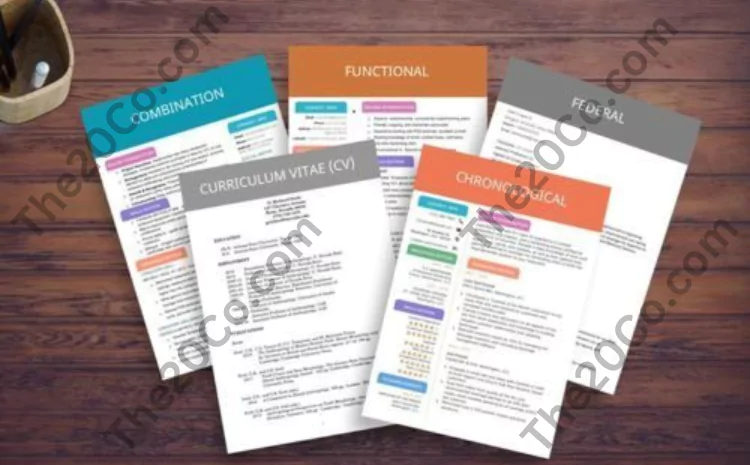The most famous type of resumes is the anti-chronological resume. This is the CV used by almost everyone. However, there are 4 other types of CVs that you can use depending on your profile. Of course, the classic resume may suit the recruiters’ expectations but the others also have their advantages. If you are looking for something original, we advise you to read this article and choose the one that suits you best.
The anti-chronological resume
This is the classic CV. The anti-chronological resume, also called ante-chronological resume, is the most popular type of CV, the one we all tend to use. Its principle is simple: list your professional and educational experiences in anti-chronological order, i.e. from the most recent to the oldest.
This type of CV is therefore suitable for people who have several experiences or who have held several positions during their career. This CV will give precise details of each of your experiences and studies to allow recruiters to easily find the essential information they are looking for and to get a first impression of you as a candidate.
To make a success of your anti-chronological CV, start it with a nice catchphrase to catch the recruiters’ attention. And don’t forget to mention the missions you have taken on and the main successes you have achieved in the past. However, you can easily take inspiration from the resume examples online.
The skills-based resume
The skills-based resume, also called thematic resume or functional resume, is also a good CV but it is a bit risky. Why is it risky? Simply because it is intended for people with little experience. It puts forward the skills and personal assets of the candidate instead of his experiences. It does not follow any order. It can make it difficult to read for recruiters.
In any case, this type of resume is very suitable if you want to hide holes in your resume or highlight your skills and qualities to stand out from the rest. It can also be used by people who want to summarize their long career in a single field in one page. In short, this type of CV is quite flexible and remains original even if it does not make the unanimity of the information it provides.
The mixed resume
Are you looking for a happy medium between all types of resumes? In that case, opt for the mixed resume. It is the perfect mix of the 2 previous types of CVs: the antichronological resume and the skills-based resume. Also called combined CV, it has the role of reducing the disadvantages of these 2 CV models.
In its early stages, it resembles the anti-chronological CV by starting with a nice catchphrase that introduces the candidate and his project. At the end, it follows the principle of the CV by skills. It highlights the candidate’s skills and classifies them by category. The only difference with the skills-based CV is that the dates, institutions and companies are very detailed.
The strong point of this type of CV is that it is unusual and can therefore surprise the recruiter. It is also easy to spot and remember and allows the candidate to stand out from the others because its goal is to sell his know-how and his personal skills.
The student resume
As its name indicates, this type of CV is especially dedicated to young graduates looking for their first job or to students looking for internships or a summer job. This type of CV is based on the same principle as the anti-chronological CV, but it emphasizes the skills of the candidates since they are not very experienced.
The student resume is designed to eliminate these job search difficulties because it focuses on the candidate’s education and personal skills instead of their experience. The recruiter will be able to see through this type of CV how much time the candidate has spent studying in a given field and then judge what type of summer job or internship might suit him/her.
The only problem with this type of resume is that it is quite complex to write. You have to deal with a blank page that you have to fill in according to the information that will be asked of you.
The chronological resume
And finally, there is the chronological or traditional resume. In the early days of resumes, it was the most popular, but as soon as the anti-chronological resume surfaced, it began to lose its place. Its principle is the opposite of that of the antichronological CV: list the experiences from the oldest to the most recent.
This type of CV used to be suitable for professionals who rarely changed companies because it is a shorter type of CV. It gives continuity in the career and a clearly visible evolution.
But nowadays, recruiters are no longer interested in first experiences. That’s where this type of resume has lost all interest.

